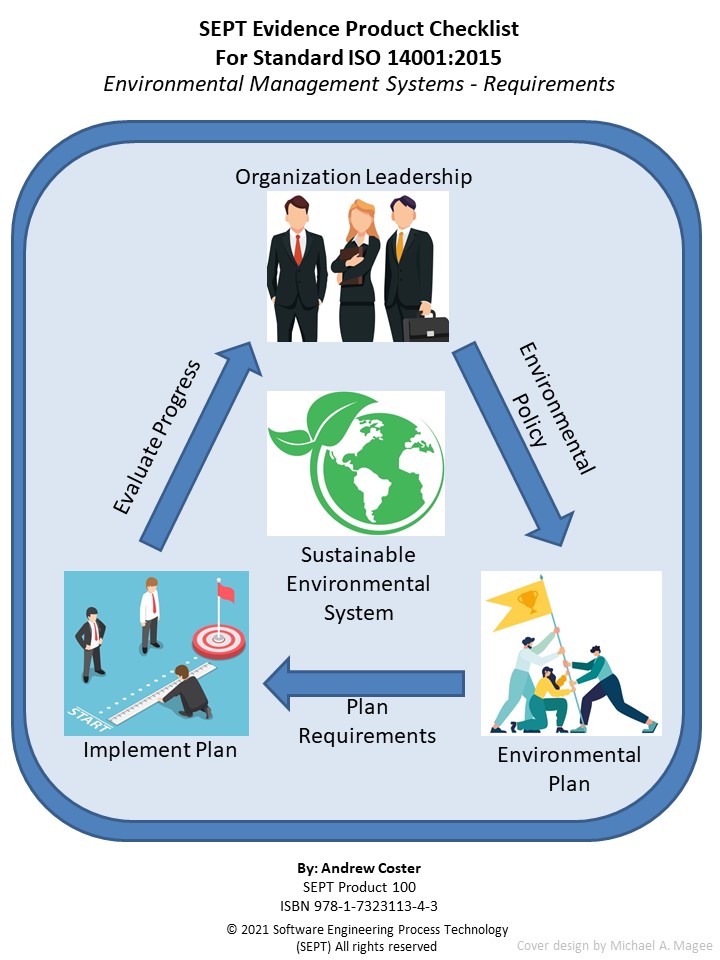

ISO 14001:2015 will respond to latest trends and ensure it is compatible with other management system standards, such as ISO 9001.


The standard was agreed upon by a majority of member countries before being released and updated, and as such it has become an internationally recognized standard accepted by a majority of countries. Changes in competence and awareness requirementsĪll ISO standards are reviewed every five years to determine if a revision is necessary to keep it current and relevant for the marketplace. The most recent version of the environmental management system requirements was published in 2015, and is referred to as ISO 14001:2015.Expanded operational control requirements.Need for risk-based planning and controls.New requirements for leadership engagement.Required interactions with external parties.Identified 10 major areas of impact of the 2015 revision: The 2015 revision of ISO 14001 introduces a number of changes from previous versions.Īs part of the effort to structure all ISO standards in the same way, the revisions introduced in the 2015 version of ISO 14001 include incorporating a required high-level structure, using mandatory definitions, and incorporating common standards requirements and clauses. What topics does ISO 14001:2015 cover?Īt the highest level, ISO 14001:2015 covers the following topics with regard to environmental management systems: ISO 14001:2015 is relevant to all organizations, regardless of size, location, sector, or industry. The requirements of the standard can be incorporated into any environmental management system, the extent to which is determined by several factors including the organization’s industry, environmental policy, products and service offerings, and location. ISO 14001:2015 should be used by any organization that wishes to set up, improve, or maintain an environmental management system to conform with its established environmental policy and requirements. Who should use the ISO 14001:2015 revision? With the new standard in place, organizations will find it easier to incorporate their environmental management system into the core business processes and gain greater business benefits. Emphasis on objectives measurement and change.The key changes in the proposed standard are: This helps to keep consistency, alignment different management system standards, offer matching sub-clauses against the top-level structure and apply common language across all standards. This document sets out in a tabular form the comparison between the terms and definitions in ISO 14001:2015, those in ISO 14001:2004, as well as those in Annex SL, and notes the differences. ISO 14001:2015 is based on the new High Level Structure (HLS) that brings a common framework to all management system standards. Claims of conformity to ISO 14001:2015, however, are not acceptable unless all its requirements are incorporated into an organization's environmental management system and fulfilled without exclusion.The new standard is published in the month of September, 2015. ISO 14001:2015 can be used in whole or in part to systematically improve environmental management. ISO 14001:2015 does not state specific environmental performance criteria. ISO 14001:2015 is applicable to any organization, regardless of size, type and nature, and applies to the environmental aspects of its activities, products and services that the organization determines it can either control or influence considering a life cycle perspective. achievement of environmental objectives.enhancement of environmental performance.Consistent with the organization's environmental policy, the intended outcomes of an environmental management system include: ISO 14001:2015 helps an organization achieve the intended outcomes of its environmental management system, which provide value for the environment, the organization itself and interested parties. ISO 14001:2015 is intended for use by an organization seeking to manage its environmental responsibilities in a systematic manner that contributes to the environmental pillar of sustainability. ISO 14001:2015 specifies the requirements for an environmental management system that an organization can use to enhance its environmental performance. Standard ISO 14001:2015 Further clarifications regarding the scope of this certificate and the applicability of the management system requirements may be obtained by consulting the organisation.


 0 kommentar(er)
0 kommentar(er)
